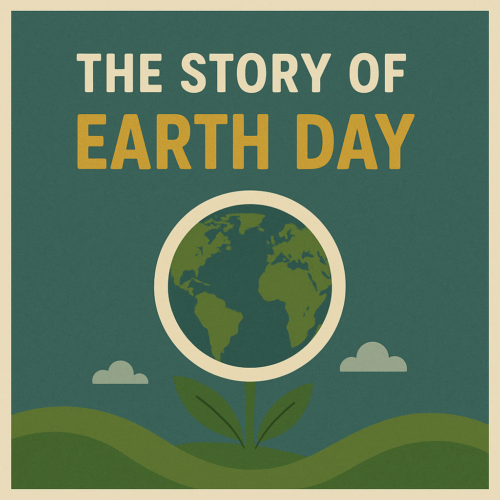New Delhi, April 21: In the spring of 1970, while the world was consumed by political unrest, civil rights battles, and the aftershocks of war, a quiet but powerful revolution began — not in the halls of power, but in the hearts of everyday people concerned about the fate of the planet.
That revolution was called Earth Day.
🌱 The Seeds of Change
The story begins with Senator Gaylord Nelson, a passionate environmentalist from Wisconsin, USA. Deeply disturbed by the destruction of nature he saw around him — oil spills along the coasts, smog-choked cities, and rivers so polluted they caught fire — Nelson believed something had to change.
But in 1970, “environmentalism” wasn’t a mainstream concept. The word climate change had yet to enter public discourse, and the U.S. had no Environmental Protection Agency, no Clean Air Act, and no Clean Water Act.
Nelson had an idea: what if there were a national teach-in on the environment — a day where citizens, especially students, could learn about ecological damage and mobilize for change? Inspired by the anti-war movement, he hoped to channel that same energy into ecological activism.
With the help of a young activist named Denis Hayes, they chose April 22, 1970 — a date that fell between spring break and final exams, ensuring maximum student participation.
🌎 April 22, 1970: The First Earth Day
When the day arrived, no one anticipated what was about to unfold.
More than 20 million people across the United States — from New York City to San Francisco — marched, demonstrated, and held rallies to demand action for the environment. It was the largest single-day protest in human history at the time.
Schools organized environmental workshops. Protesters carried signs reading “There Is No Planet B” and “Give Earth a Chance”. Politicians took notice. The media paid attention. And for the first time, environmental protection became a national priority.
In the years that followed, Earth Day’s impact was profound. The U.S. government established the Environmental Protection Agency (EPA) and passed landmark laws like the Clean Air Act, Clean Water Act, and Endangered Species Act.
🌐 Earth Day Goes Global
As the decades passed, Earth Day didn’t fade — it grew.
By 1990, Earth Day had become a global event, mobilizing over 200 million people in 141 countries. It gave a powerful boost to recycling efforts and laid the foundation for the 1992 United Nations Earth Summit in Rio de Janeiro.
In the 2000s, the internet helped Earth Day reach new generations, with campaigns focused on climate change, renewable energy, and global conservation. Celebrities, scientists, world leaders, and citizens joined the movement, proving that caring for the planet wasn’t a fringe idea — it was a global priority.
🌿 Earth Day Today
Today, Earth Day is celebrated every April 22 by over 1 billion people in more than 190 countries. It’s a day of action, reflection, and commitment to protecting our shared home.
The themes evolve each year — from Climate Action to Restore Our Earth, and in 2025, it’s “Our Power, Our Planet”, highlighting the urgent need to shift to renewable energy and empower communities.
But at its core, Earth Day remains what it always was: a reminder that we have one planet, and it’s up to all of us to care for it.
🌟 The Legacy Lives On
What began as a bold idea in the mind of a U.S. senator has become a global movement—one that inspires activism, drives policy change, and shapes the future.
Because Earth Day isn’t just a date on the calendar.
It’s a declaration.
That we believe in clean air, pure water, and a livable future.
That we stand for wildlife, forests, oceans, and the communities that depend on them.
And that we understand this truth:
The Earth does not belong to us — we belong to the Earth.

